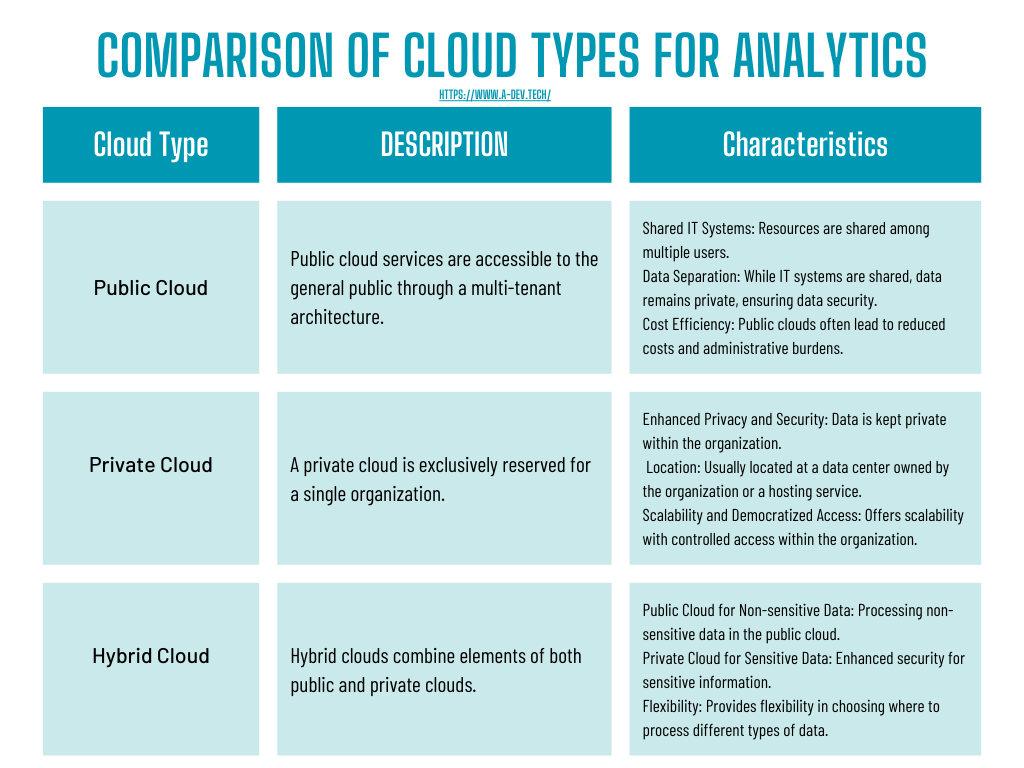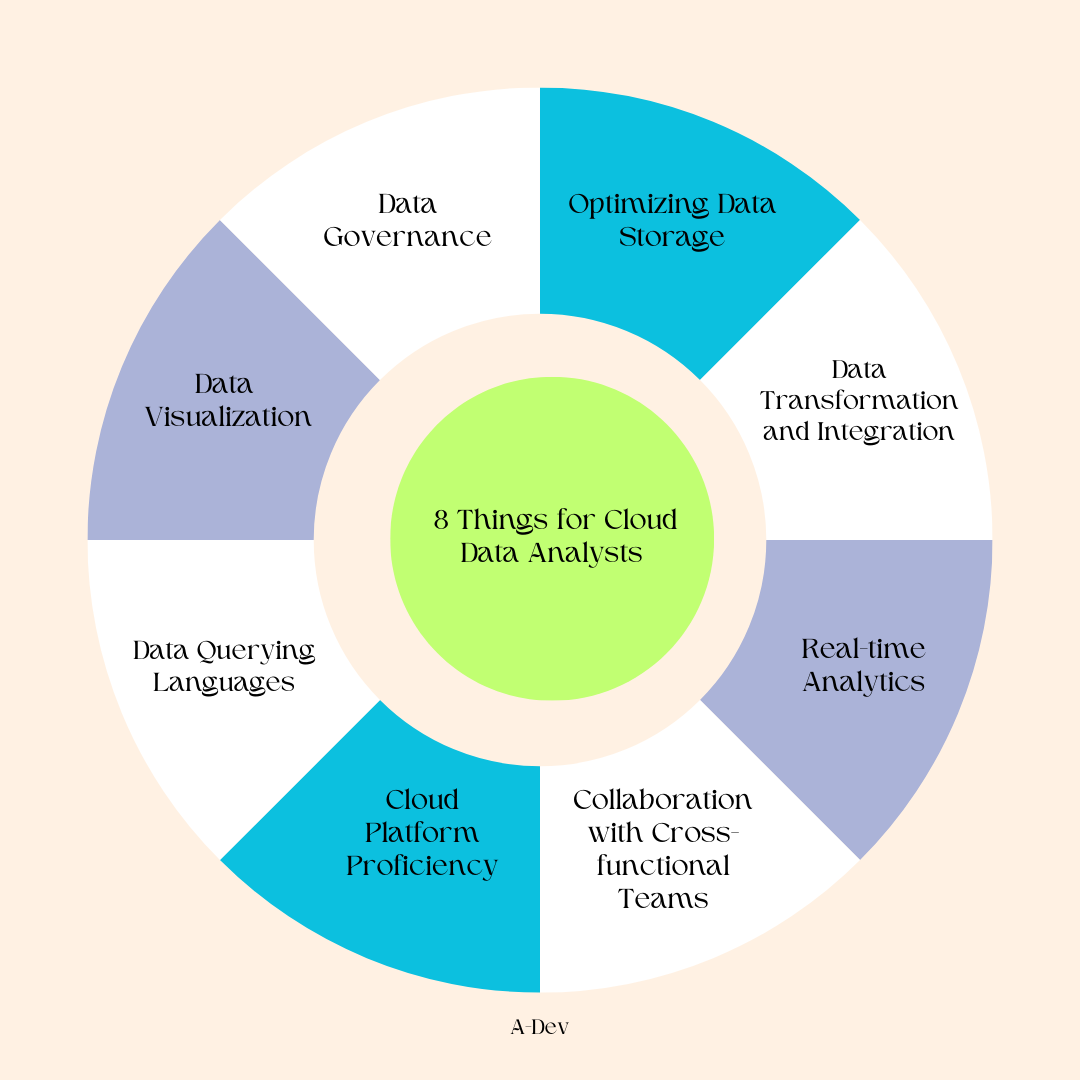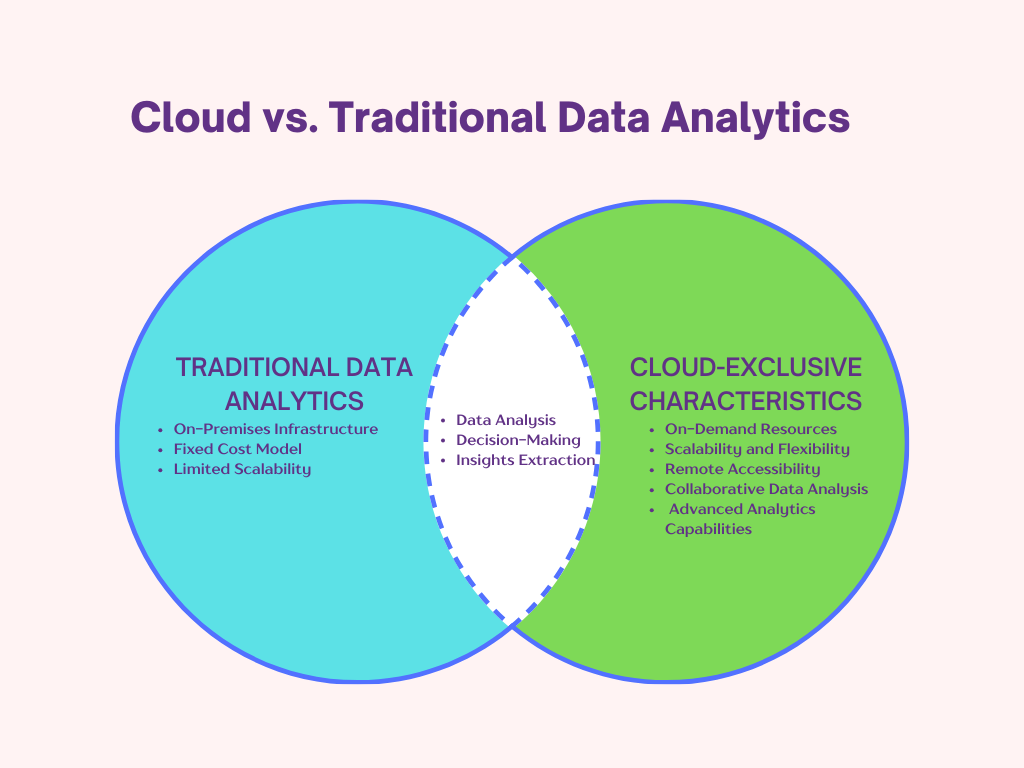Embark on a transformative journey through the realm of Cloud Analytics with A-Dev, your trusted partner in IT services and cloud adoption and migration expertise. Discover cutting-edge solutions that redefine data-driven decision process, offering adaptability, accessibility, and advanced analytics skill set. Join us as we navigate the complexities of modern businesses and unveil the significance of Cloud Analytics in shaping the future of IT landscapes.
Understanding Cloud Analytics and Data Analysis
Definition and Significance
Cloud Analytics represents a transformative service model where essential elements of data analytics find implementation in the cloud. It is a strategic approach that harnesses various tools and applications to analyze large data sets, measure performance, categorize business information, and optimize overall operational effectiveness. In the dynamic landscape of modern businesses, Cloud Analytics emerges as a crucial facilitator of data-driven decision process.
Key Components: Data Storage, Processing, and Analysis in the Cloud
At its core, Cloud Analytics relies on essential components and algorithms that together enable companies to get actionable results from their data models.
- Data Storage. The cloud analytics solution utilizes robust technologies such as Hadoop, Apache Spark, Amazon Redshift, Google BigQuery and SQL Server to efficiently store large data sets. This ensures that organizations can securely manage and access their data sources in a cloud environment.
- Data Processing. The cloud provides a scalable and flexible infrastructure that facilitates the processing of massive amounts of data. This includes data transformation and manipulation capabilities that enable organizations to quickly gain meaningful insights.
- Data Analytics. Using specialized software for advanced analytics operations, Cloud Analytics enables companies to perform activities such as predictive modeling and optimization techniques. In addition, powerful visualization tools increase the interpretability of data, making it easier to make informed decisions.
Types of clouds for analytics
Understanding the deployment patterns associated with their cloud analytics tools is critical for organizations when deciding how to structure their cloud analytics environment.

The table provides a comprehensive comparison of the different types of analytics clouds, highlighting their distinguishing characteristics.
Public Cloud offers accessibility to the general public with shared IT system, ensuring cost efficiency at scale while maintaining data security through a multi-tenant architecture.
In a Private Cloud, exclusivity to a single organization enchance private and policy.
A Hybrid Cloud combines public and private cloud elements. They process non-sensitive data in the public cloud for efficiency, secure
sensitive information stored in the private cloud, and provide flexibility in choosing data processing locations.
In the contemporary business landscape, the significance of Cloud Analytics and cloud analytics platform lies in its ability to offer scalable,
accessible, and flexible solutions. These encompass not only the key components of data storage, processing, and analysis but also diverse
deployment models tailored to specific business needs, ultimately empowering organizations to navigate the complexities of big data and
gain real-time insights for strategic decision-making.
The Crucial Role of Data Processing in Cloud Environments
Building upon the premise of our exploration of cloud types, understanding the crucial role of data assesment within cloud environments
becomes paramount. As organizations adopt various cloud analytics models, the responsibilities and required skills for effective cloud information
assesment play a central role in extracting meaningful insights and steering informed decision-making.
In the dynamic realm of cloud and cloud analytics environments, sophisticated analytical processing depends on eight critical characteristics:

- Data governance: maintaining data quality, integrity and security to ensure compliance with regulations and internal policies.
- Data Storage Optimization. Efficiently manage data storage in cloud databases and warehouses, optimizing performance and cost efficiency.
- Data transformation and integration: seamlessly integrate different datasets through transformation to ensure compatibility and connectivity.
- Real-time analytics: providing instant analytics insights by implementing real-time analytics solutions in the cloud.
- Collaborate with cross-functional teams: facilitate effective collaboration with data processing, business intelligence and software development teams to optimize analytical processing.
- Cloud platform proficiency: Possess a deep knowledge of cloud platforms (e.g. AWS, Azure) and utilize their analytics services.
- Data Query Languages: demonstrate proficiency in languages such as SQL to efficiently query and extract information from cloud databases.
- Data visualization: presenting complex data sets using visualization tools to enhance the ease of interpretation by various stakeholders in the cloud ecosystem.
This brief captures the key responsibilities and skills required of cloud data analysts, highlighting their key role in overcoming the complexities of cloud environments and harnessing the full potential of cloud information resources.
Traditional and Cloud-based Analytics Solutions

In a dynamic data analytics environment, a Venn diagram illustrates the subtle differences between cloud and traditional methodologies. At the core are the core analytic practices of data processing, decision making, and information extraction. To maximize the transformative potential, enterprises can leverage cloud analytics to improve efficiency and competitiveness.
Traditional data analytics:
The left circle emphasizes traditional business data analytics based on local infrastructure, fixed costs and limited scalability. This exposes the problems associated with upfront investment and inflexible scalability of traditional approaches.
Cloud-exclusive benefits:
On the right, the cloud-exclusive circle unfolds, spotlighting on-demand resources, seamless scalability, remote accessibility, collaborative data processing, and advanced analytics capacities. These traits showcase the agility and creativity inherent in cloud analytics.
Strategic Considerations:
The visual representation serves as a strategic guide, prompting thoughtful consideration of the unique strengths offered by cloud analytics tools. It encourages businesses to leverage its transformative potential for enhanced efficiency and competitiveness.
In summary, the Venn diagram succinctly captures the comparative essence of both cloud based analytics and traditional business data analytics, offering a visual aid for readers to comprehend the nuances of each approach and make informed decisions aligned with their analytical objectives.
How Cloud Analytics Benefits Users?
Cloud analytics stands as a transformative force, capable to enable businesses with a myriad of advantages that redefine the landscape of data-driven decision process. Below, we explore the primary benefits of cloud analytics that businesses can reap from embracing cloud analytics solutions:

- Scalability: Cloud analytics provides users with scalable resources, allowing them to effortlessly expand or shrink their analytics capabilities based on evolving needs. This flexibility ensures efficient operations, accommodating fluctuations in data volume and analysis requirements.
- Accessibility: Users gain the ability to access analytics tools and insights remotely, breaking free from the constraints of on-premises locations. This newfound accessibility fosters a collaborative environment, empowering teams to make data-driven decisions from any corner of the globe.
- Cost Efficiency: With a pay-as-you-go model, users can optimize costs by only paying for the resources and services they consume. Cloud analytics eliminates the need for substantial upfront investments in hardware, providing a more cost-effective approach to data examination.
- Advanced Analytics Capabilities: Cloud analytics unlocks advanced analytics tools and techniques, including machine learning and artificial intelligence. Users can harness these capabilities to delve deeper into data, uncover patterns, and generate predictive insights, elevating the value derived from their data assets.
- Real-time Insights: Cloud analytics facilitates real-time data evaluation, enabling users to derive insights on the fly. This real-time capability is crucial for swift decision-making, allowing organizations to respond promptly to changing market conditions and emerging opportunities.
- Collaborative Data Evaluation: Cloud analytics fosters collaboration among diverse teams. Users can seamlessly share datasets, collaborate on analyses, and collectively contribute to the generation of insights. This collaborative approach enhances the overall efficiency of data evaluation processes.
- Security and Compliance: Cloud analytics providers invest heavily in robust security measures, ensuring the confidentiality and integrity of user data. Additionally, compliance features are integrated, offering users peace of mind regarding data governance and regulatory adherence.
In essence, cloud analytics is a game-changer for users, delivering a comprehensive suite of benefits that go beyond traditional data examination methods. As organizations embrace cloud-based solutions, users find themselves equipped with the tools and capabilities needed to navigate the complexities of modern data analytics successfully.
Cloud Computing: The Foundation for Advanced Data Analytics
In the realm of advanced data evaluation, A-DEV positions cloud computing as the indispensable foundation for unlocking unparalleled insights. Our holistic approach leverages the dynamic capabilities of cloud analytics platforms, providing companies with a robust infrastructure for cutting-edge analytics.
A-DEV harnesses the power of self-service analytics tools embedded within cloud platforms, empowering customers to explore, analyze, and derive actionable insights from their data. The flexibility and scalability inherent in cloud computing lay the groundwork for sophisticated data analysis, enabling businesses to stay ahead in a data-driven world.
Explore a seamless integration of cloud computing and advanced cloud analytics systems with A-DEV, where innovation meets practicality. Our commitment to staying at the forefront of technological advancements ensures that your data analysis endeavors, incorporating cutting-edge analytic models, are not just current but also future-proof, driving your business towards unprecedented analytical heights.
Conclusion
In conclusion, the journey through cloud analytics unveils a landscape of transformative possibilities. A-Dev emerges as a key player, offering cutting-edge solutions that redefine the way businesses harness data. Key takeaways include the scalability, accessibility, and advanced analytics capabilities that cloud analytics brings to the forefront. A-Dev’s strategic approach to seamlessly integrating cloud technologies and Devops ensures businesses stay ahead in the dynamic realm of data-driven decision-making.
The significance of A-Dev’s role lies in its commitment to innovation and personalized solutions. Businesses partnering with A-Dev not only embrace the cloud based data models but position themselves for future success in an ever-evolving digital landscape.
Готовы совершить революцию в анализе данных? Сделайте следующий шаг с A-Dev. Свяжитесь с нами для получения индивидуальных консультаций по решениям облачной аналитики, где наш опыт отвечает вашим уникальным потребностям в бизнес-аналитике. Узнайте, какое преобразующее влияние мы можем оказать на вашу организацию. Свяжитесь с нами сегодня и улучшите свои стратегии обработки данных с помощью A-Dev — вашего партнера в раскрытии всего потенциала облачной аналитики.





